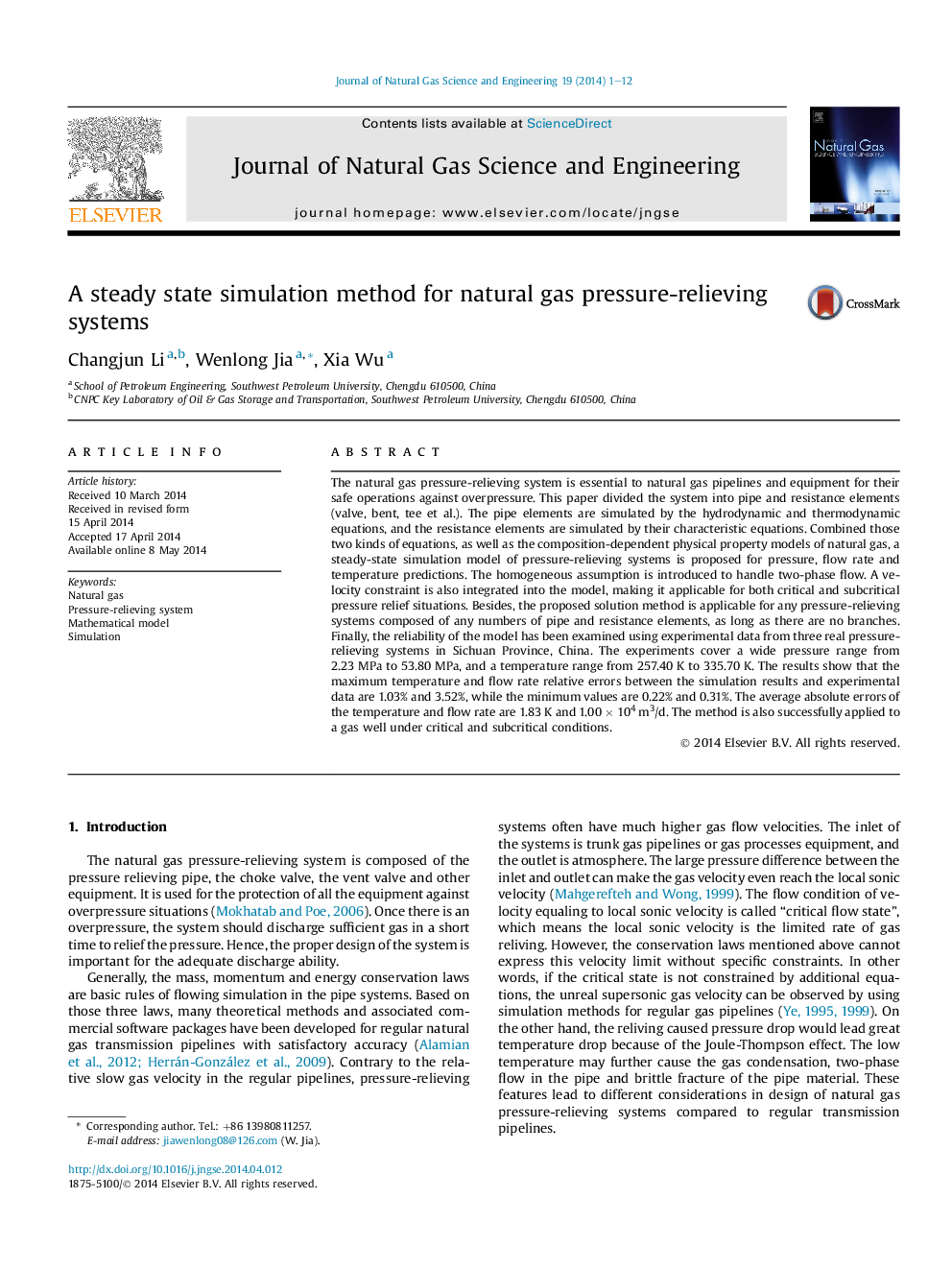| کد مقاله | کد نشریه | سال انتشار | مقاله انگلیسی | نسخه تمام متن |
|---|---|---|---|---|
| 1757967 | 1523021 | 2014 | 12 صفحه PDF | دانلود رایگان |
• A steady state method for natural gas pressure-relieving systems is proposed.
• An outer iteration is utilized to ensure valid critical flow state of the solution.
• The model is validated by experiments in wide pressure and temperature ranges.
• The model can be used in both critical and subcritical flow states.
The natural gas pressure-relieving system is essential to natural gas pipelines and equipment for their safe operations against overpressure. This paper divided the system into pipe and resistance elements (valve, bent, tee et al.). The pipe elements are simulated by the hydrodynamic and thermodynamic equations, and the resistance elements are simulated by their characteristic equations. Combined those two kinds of equations, as well as the composition-dependent physical property models of natural gas, a steady-state simulation model of pressure-relieving systems is proposed for pressure, flow rate and temperature predictions. The homogeneous assumption is introduced to handle two-phase flow. A velocity constraint is also integrated into the model, making it applicable for both critical and subcritical pressure relief situations. Besides, the proposed solution method is applicable for any pressure-relieving systems composed of any numbers of pipe and resistance elements, as long as there are no branches. Finally, the reliability of the model has been examined using experimental data from three real pressure-relieving systems in Sichuan Province, China. The experiments cover a wide pressure range from 2.23 MPa to 53.80 MPa, and a temperature range from 257.40 K to 335.70 K. The results show that the maximum temperature and flow rate relative errors between the simulation results and experimental data are 1.03% and 3.52%, while the minimum values are 0.22% and 0.31%. The average absolute errors of the temperature and flow rate are 1.83 K and 1.00 × 104 m3/d. The method is also successfully applied to a gas well under critical and subcritical conditions.
Journal: Journal of Natural Gas Science and Engineering - Volume 19, July 2014, Pages 1–12
